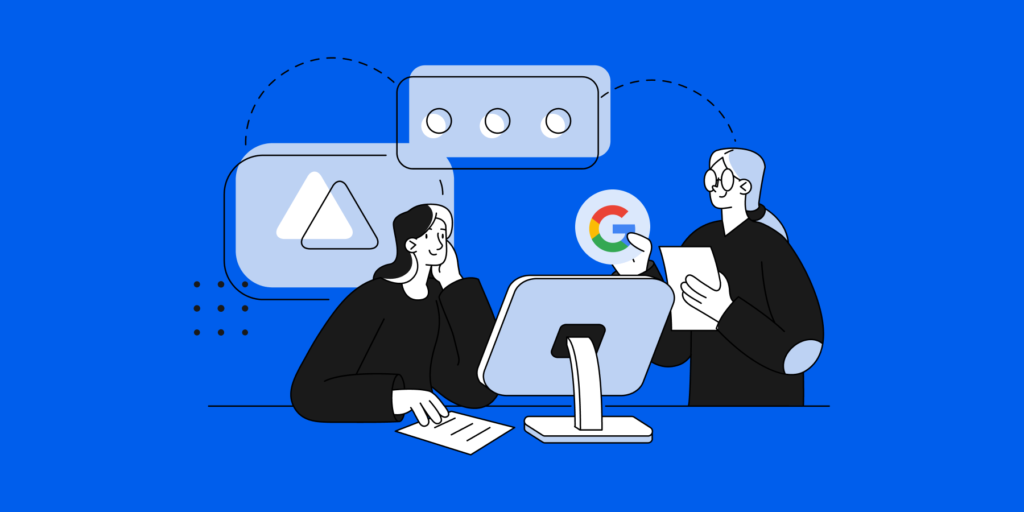In today’s rapidly evolving digital landscape, the traditional approach to cybersecurity based on perimeter defenses is no longer sufficient. This paradigm shift is particularly relevant to Google Admins overseeing Enterprise Google Workspace environments. As we go into the Zero Trust Security Model, let’s explore why it’s essential for modern enterprises and how GAT Labs plays a pivotal role in implementing this robust security framework.
Why Use a Zero Trust Model?
Traditionally, IT relied on perimeter security strategies, but digital transformation and hybrid cloud infrastructure have changed the game. With remote work becoming the norm and data scattered globally, a network perimeter no longer provides adequate protection. Enterprises face challenges like patchwork security solutions, increased manual tasks for security teams, and rising data breach costs.
This is where the Zero Trust Security Model comes into play. It offers adaptive and continuous protection, aiming to wrap security around every user, device, and connection for every transaction.
How It Works
The Zero Trust model, originally developed by John Kindervag, assumes that every connection and endpoint is a potential threat. It goes beyond traditional security approaches by:
Logging and Inspecting All Traffic:
In a Zero Trust Security Model, every piece of corporate network traffic undergoes meticulous logging and thorough inspection. This crucial step is instrumental in identifying anomalies and potential threats.
By monitoring and analyzing network activity, organizations gain valuable insights into their security posture. This proactive approach allows for the swift detection of any suspicious behavior or unauthorized access attempts.
Limiting and Controlling Access:
Zero Trust places a strong emphasis on maintaining strict access controls. This means that organizations must implement measures to limit access to their Google Workspace resources. Only authorized users should be granted access to critical data and applications. By enforcing stringent access policies, organizations can significantly reduce the risk of unauthorized data exposure and potential breaches.
Verifying and Securing Resources:
In the context of Zero Trust, verifying and securing network resources within Google Workspace is of paramount importance. Consequently, this process ensures that only authenticated and authorized users can access these resources. Authentication methods such as multi-factor authentication (MFA) and role-based access control (RBAC) play a vital role in verifying the identity and permissions of users.
By implementing these security measures, organizations can bolster their defenses and safeguard their sensitive data effectively.
Zero Trust: Beyond the Basics
While we’ve covered the fundamental principles of Zero Trust, it’s essential to go a bit deeper into this security paradigm. Zero Trust is not just a set of security measures; it’s a mindset that reshapes the way organizations approach cybersecurity.
Here are a few key points to consider:
Continuous Monitoring and Adaptation:
Zero Trust operates on the principle of continuous monitoring and adaptation. It’s not a one-time implementation but an ongoing process. Consequently, Security teams must continually assess and adapt their security measures to stay ahead of evolving threats.
Least-Privilege Access:
The concept of least-privilege access is at the core of Zero Trust. It means that users and devices are granted the minimum level of access required to perform their tasks. This principle minimizes the attack surface and reduces the potential impact of security breaches.
Granular Policy Enforcement:
Moreover, Zero Trust relies on granular policy enforcement. Access policies are defined based on specific user roles, device attributes, and contextual information. This level of granularity allows organizations to tailor security measures to individual use cases.
User and Entity Behavior Analytics (UEBA):
UEBA is an integral part of Zero Trust. It involves analyzing user and entity behavior to detect deviations from normal patterns. UEBA helps in identifying suspicious activities and potential threats, even within the organization’s trusted network.
Collaboration and Visibility:
Zero Trust requires collaboration across various departments within an organization, including IT, security, and business units. It’s essential to have a unified approach and shared visibility into security policies and incidents.
Adoption Challenges:
Implementing Zero Trust can be challenging, particularly for organizations with legacy systems and traditional security models. It often involves a cultural shift and may require significant changes to existing security architectures.

Elevating Zero Trust Security with GAT Labs
Furthermore, implementing Zero Trust Security requires a comprehensive set of capabilities, and GAT Labs offers the necessary solutions:
-
Identity:
GAT Labs provides tools for managing access through single sign-on (SSO), multifactor authentication, and lifecycle management, ensuring a strong identity foundation.
-
Data:
Protecting critical data is paramount, and GAT Labs helps discover, classify, and manage data access based on risk. Consequently, it aligns perfectly with Zero Trust practices.
-
Devices and Workloads:
GAT Labs defends organizations by securing applications and endpoints, a crucial aspect of Zero Trust security.
-
Analytics and Visibility:
With intelligent analytics and monitoring, GAT Labs empowers organizations to enforce Zero Trust security policies effectively.
-
Automation and Orchestration:
Rapidly addressing security issues is simplified with GAT Labs’ automation capabilities, which are crucial for a robust Zero Trust practice.
-
Network and Endpoint:
GAT Labs’ modern solutions protect networks, infrastructure, and endpoints from the ever-evolving cybersecurity threats, therefore complementing the Zero Trust approach.
Conclusion:
In a world where security threats constantly evolve, adopting a Zero Trust Security Model is imperative for enterprises managing Google Workspace. GAT Labs stands as a reliable partner, offering the tools and expertise needed to implement this robust security framework effectively. As Google Admins, your commitment to Zero Trust security will not only safeguard your organization’s sensitive data but also enhance the user experience across the board.
By integrating GAT Labs’ solutions into your security strategy, you can embrace the Zero Trust model with confidence, knowing that your Google Workspace environment is fortified against both internal and external threats.
Finally, in our journey towards a more secure digital future, remember: Never trust, always verify.
Stay in the loop
Sign up to our newsletter to get notified whenever a freshly baked blog post is out of our content oven.





